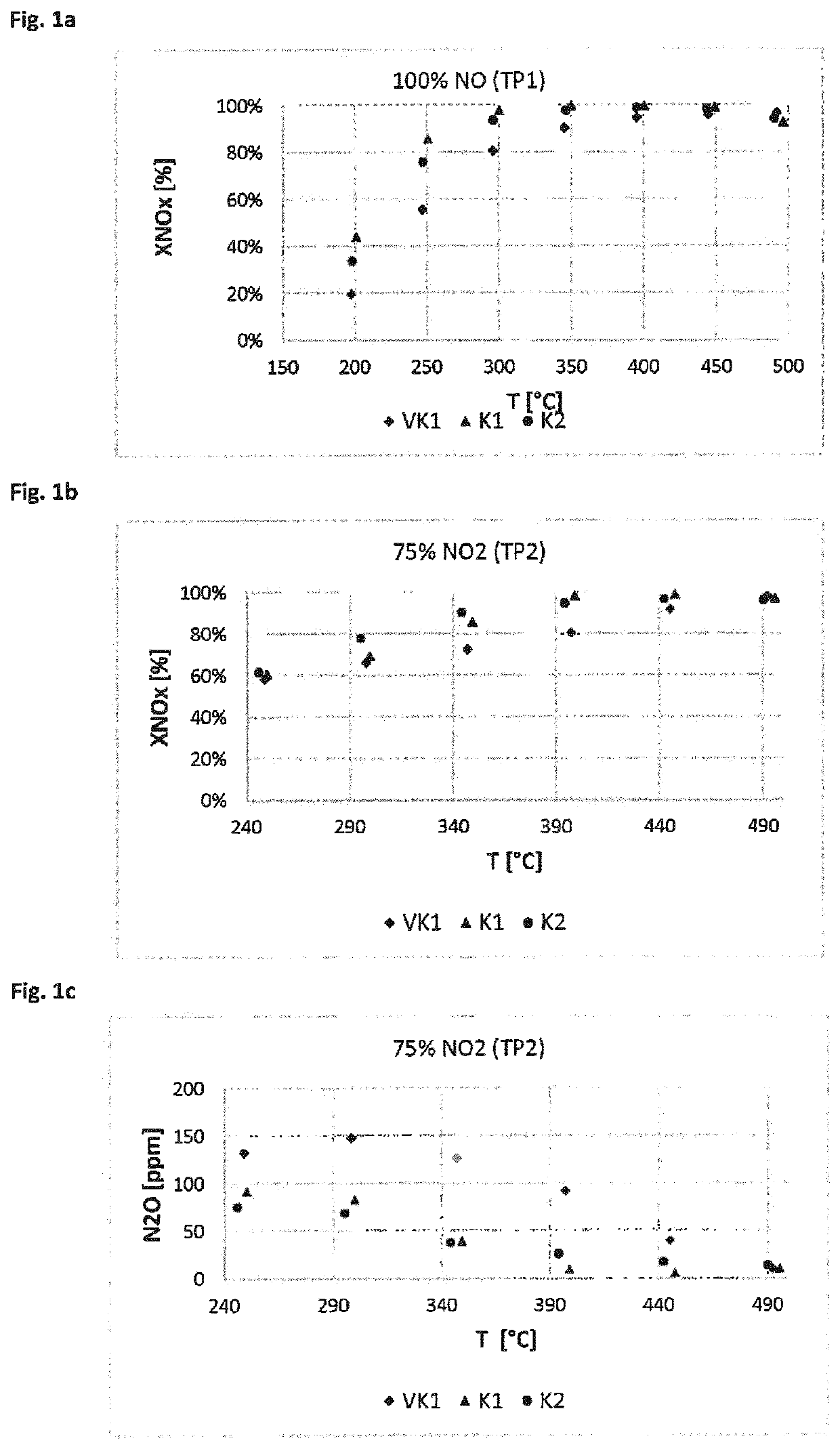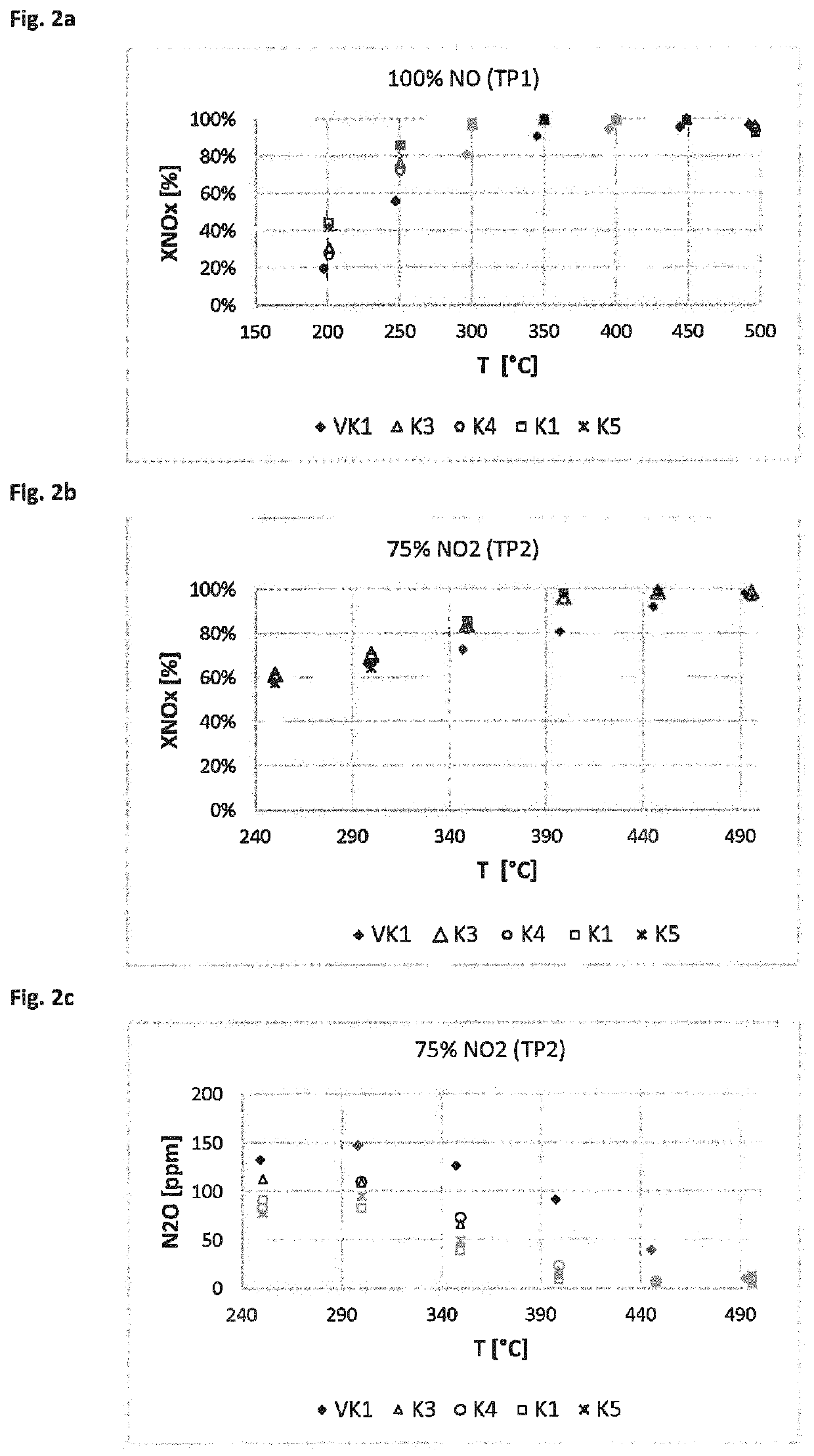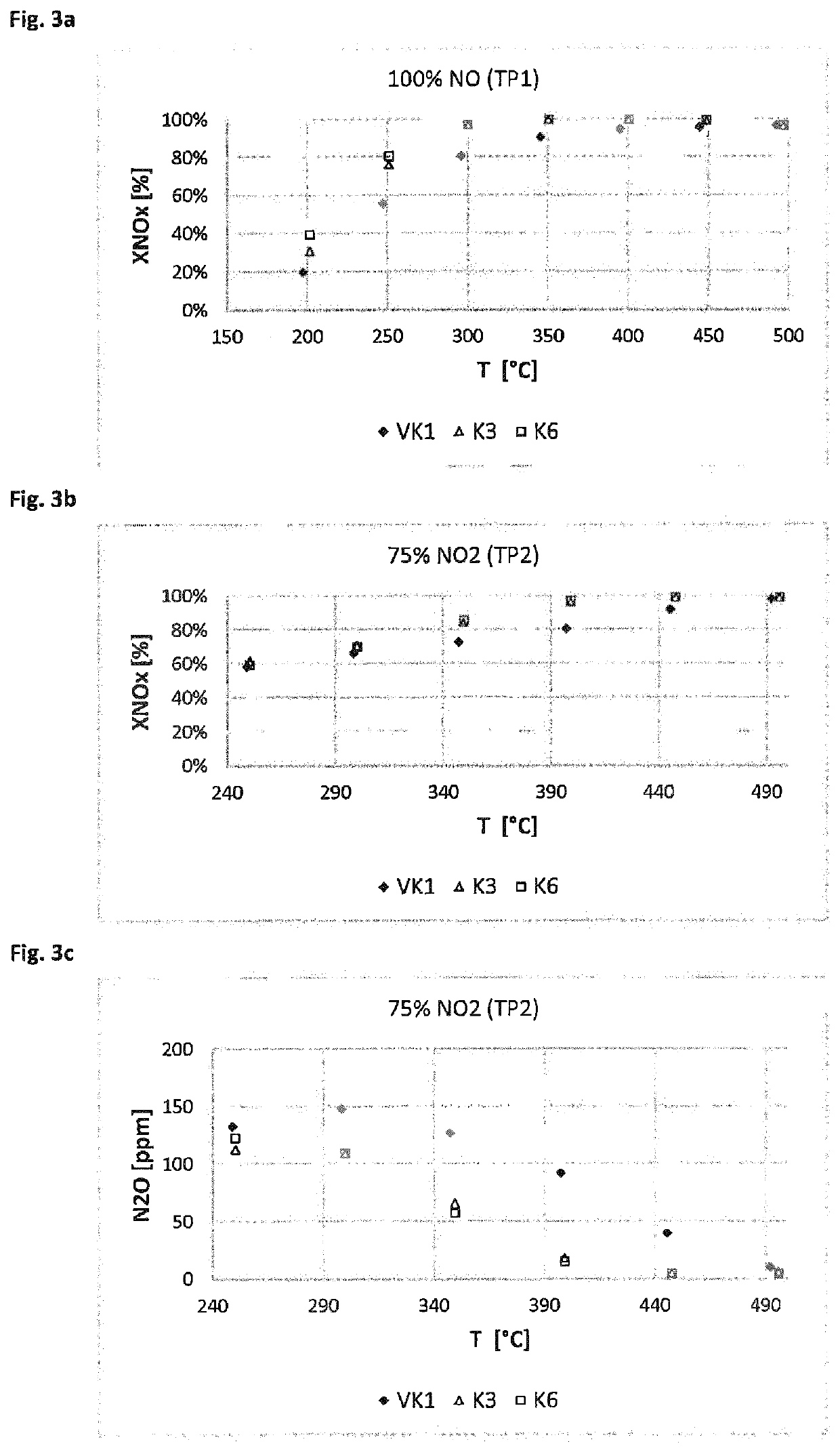SCR catalyst device containing vanadium oxide and molecular sieve containing iron
a catalyst device and molecular sieve technology, which is applied in the direction of physical/chemical process catalysts, metal/metal-oxide/metal-hydroxide catalysts, and separation processes, etc., can solve the problems of reducing nitrogen oxides to nitrogen much more difficult, oxidizing ammonia to low-valent nitrogen oxides, and preventing the formation of nitrous oxide. , the effect of preventing the formation of nitrous oxid
- Summary
- Abstract
- Description
- Claims
- Application Information
AI Technical Summary
Benefits of technology
Problems solved by technology
Method used
Image
Examples
example 1
on of the Coating Suspensions (Wash Coats)
[0127]Preparation of Coating Suspension A (Vanadium SCR)
[0128]A commercially available titanium dioxide in the anatase form doped with 5 wt % silicon dioxide was dispersed in water. Next, an aqueous solution of ammonium metatungstate and ammonium metavanadate dissolved in oxalic acid were added as a tungsten or vanadium precursor in an amount such that a catalyst of composition 87.4 wt % TiO2, 4.6 wt % SiO2, 5.0 wt % WO3 and 3.0 wt % V2O5 was the result. The mixture was stirred thoroughly and finally homogenized in a commercially available agitator ball mill and ground to d90<2 μm.
[0129]Preparation of Coating Suspension B (Vanadium SCR with 1% Cerium Oxide)
[0130]A commercially available titanium dioxide in the anatase form doped with 5 wt % silicon dioxide was dispersed in water. Next, an aqueous solution of ammonium metatungstate as a tungsten precursor, ammonium metavanadate dissolved in oxalic acid as a vanadium precursor, and an aqueous ...
example 2
on of the Catalyst Devices
[0135]Various catalyst devices were prepared by coating ceramic substrates with coating suspensions A to D. Conventional ceramic monoliths with parallel flow channels (flow-through substrates) open at both ends were used as substrates. In this case, a first and a second layer (S1, S2) were applied to each substrate, wherein each layer was subdivided into two adjacent zones (Z1, Z2). The exhaust gases to be purified flow in the flow direction into the catalyst device, i.e. via the upper layer 2 and from zone 1 to zone 2. In Scheme 1, the structure of the catalyst devices is shown with four catalytic regions located in two layers and two zones.
[0136]Scheme 1: Schematic Structure of the Catalyst Devices Produced According to the Exemplary Embodiments
[0137]Flow Direction→
[0138]
SubstrateLayer 2 Zone 1Layer 2 Zone 2(S2Z1)(S2Z2)Layer 1 Zone 1Layer 1 Zone 2(S1Z1)(S1Z2)
[0139]The compositions and the amounts of coating suspensions A to D used are summarized in Table ...
example 3
of Nitrogen Oxides by SCR
[0146]Measurement Method
[0147]The catalyst devices prepared according to Example 2 were tested for their activity and selectivity in the selective catalytic reduction of nitrogen oxides. In doing so, the nitrogen oxide conversion was measured at various defined temperatures (measured on the inlet side of the catalyst) as a measure of the SCR activity and the formation of nitrous oxide. On the inlet side, model exhaust gases containing preset proportions of NO, NH3, NO2 and O2, among other things, were introduced. The nitrogen oxide conversions were measured in a reactor made of quartz glass. Drill cores with L=3″ and D=1″ were tested between 190 and 550° C. under steady-state conditions. The measurements were taken under the test conditions summarized below. GHSV is the gas hourly space velocity (gas flow rate:catalyst volume). The conditions of measurement series TP1 and TP2 are summarized below:
[0148]Test Parameter Set TP1:
[0149]Gas hourly space velocity G...
PUM
| Property | Measurement | Unit |
|---|---|---|
| temperature | aaaaa | aaaaa |
| temperature | aaaaa | aaaaa |
| kinetic pore diameter | aaaaa | aaaaa |
Abstract
Description
Claims
Application Information
 Login to View More
Login to View More - R&D
- Intellectual Property
- Life Sciences
- Materials
- Tech Scout
- Unparalleled Data Quality
- Higher Quality Content
- 60% Fewer Hallucinations
Browse by: Latest US Patents, China's latest patents, Technical Efficacy Thesaurus, Application Domain, Technology Topic, Popular Technical Reports.
© 2025 PatSnap. All rights reserved.Legal|Privacy policy|Modern Slavery Act Transparency Statement|Sitemap|About US| Contact US: help@patsnap.com



